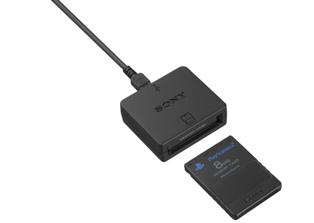Folding@home is a feature under Network on the PS3 Home Menu. It is a distributed computing project that is run by Stanford University. The goal of the project is to research protein folding mechanisms in the hope that this will lead to medical treatments for related diseases. You can help out by allowing Stanford University to use your PS3 when is it idle. The power of the PS3 means you contribute a significant amount of CPU time to the project. More information can be found at http://folding.stanford.edu/.
- Home
- Articles posted by Niraj Shah (Page 622)
Articles posted by Niraj Shah
What is the Emotion Engine and Graphic Synthesizer?
The Emotion Engine (EE) is the PlayStation 2 CPU, and the Graphics Synthesizer (GS) is the PS2 graphics chip. Both were included in early PS3 models to achieve backwards compatibility. In later models (CECHC/CECHD/CECHE/CECHF), the EE chip was removed and the PS3 now uses software to achieve backwards compatibility. Naturally, the physical hardware has better backwards compatibility, however, Sony regularly updates the PS2 emulator software via firmware updates.
In the current models (CECHG/CECHH), the GS chip has been removed and so there is no backwards compatibility, since the job of the GS cannot be simulated using software. Eventually, Sony may figure a way out to simulate the GS to bring PS2 compatibility to the current models.
Can I put wallpaper on the XMB? How?
You can only put wallpaper on the XMB if you are using Firmware 1.90 or greater. You can put a photo as a wallpaper by finding the photo you want and pressing TRIANGLE to bring up the onscreen menu. From the menu, select the “Use as Wallpaper” option. Before the photo is added as a wallpaper, you have the ability to zoom in or out of the photo.
Can I write to Blu-Ray discs using the PlayStation 3?
No. The PS3 has a read-only Blu-Ray drive so it can only read from a disc not write. A Blu-Ray Writer drive can be purchased separately for a PC for around the same price as a PlayStation 3.
Can I play VOB files on the PS3 without converting them?
Yes you can. Simply rename the file to MP4. It might show up at unsupported data on the PS3 Video Menu, however, when trying to play the file it should work fine. This work-around works for VOB files from any region, so you can use to play NTSC DVD’s on your PAL PS3, for example.
Can I use my PlayStation 2 Memory Card with the PlayStation 3?
Yes you can, however, you will need to purchase a special adapter since you cannot directly connect the Memory Card to the PS3. The adapter lets you copy your PS1 and PS2 saved data to and from the PlayStation 3 system.

Is the PlayStation 3 region-free?
Yes. A PS3 game from any region will work on your PlayStation 3 console. So you can but an American game while on holiday and it will work with your PAL console. PS1 and PS2 games, however, are still region-encoded. So foreign titles will not work on the PlayStation 3. Blu-Ray movies also have region-encoding, so you can only purchase movies from within your region.
Why is the controller called SIXAXIS?
The PlayStation 3 controller is called the SIXAXIS because it can sense six types of movements:
- Roll
- Pitch
- Yaw
- X-Axis
- Y-Axis
- Z-Axis

What is Blu-ray?
Blu-ray Disc (BD) is a next generation optical disc format designed for high-definition content. The name Blu-ray is derived from the blue-violet laser used to read and write to the disc.
When was PlayStation 3 Launched?
The PlayStation 3 was launched in Japan (20GB and 60GB) on November 11th 2006, which was followed by the North American (20GB and 60GB) release on November 17th 2006. PlayStation 3 was released in Europe (60GB only) on March 23rd after a production delay.
The 80GB PlayStation 3 model was launched exclusive to North America on August 6th 2007.
The 40GB PlayStation 3 model was launched in Europe on October 10th 2007, followed by the Australian/NZ launch on October 11th 2007. The 40GB model was launched in North America on November 2nd 2007, and in Japan on November 11th 2007.
